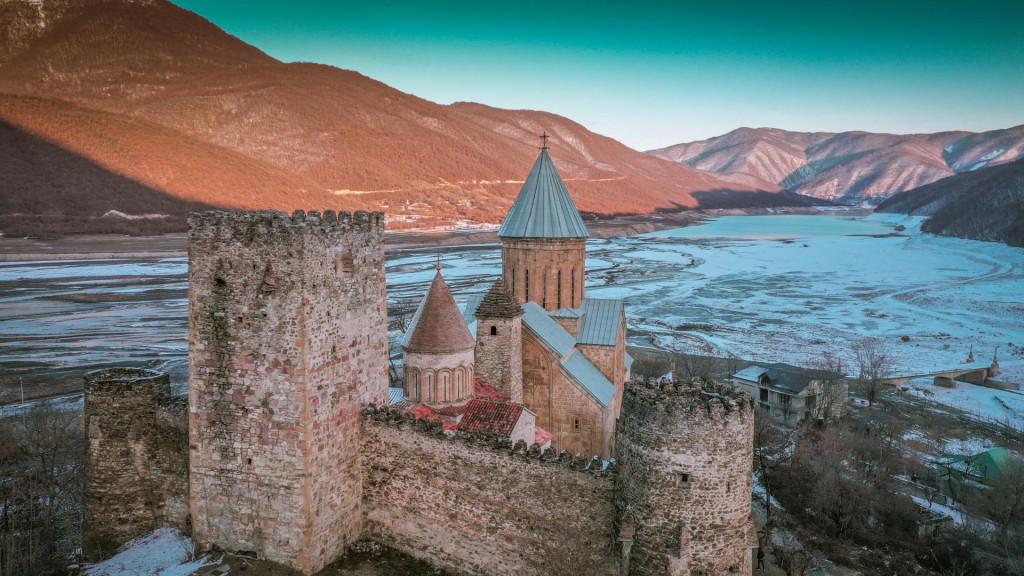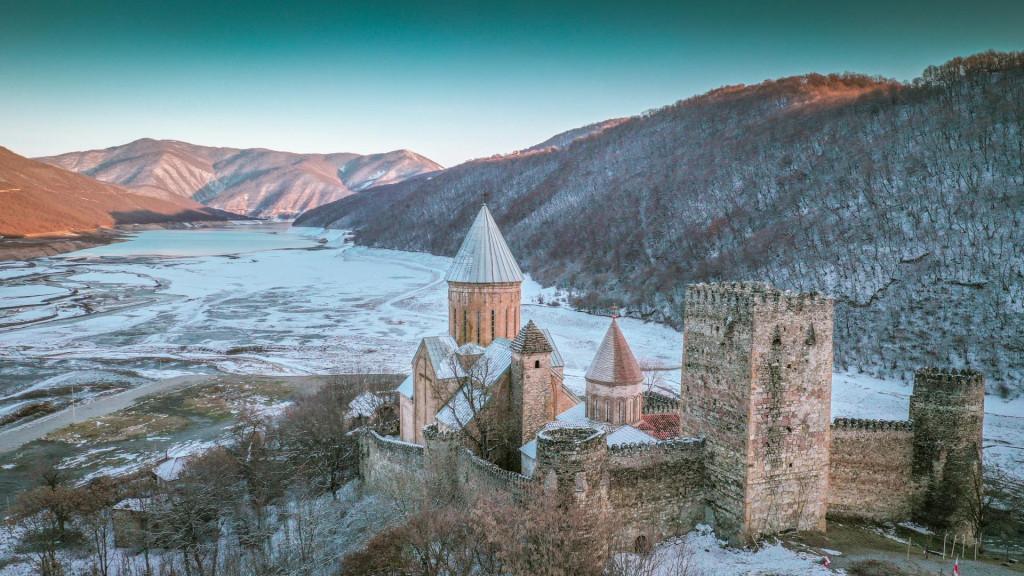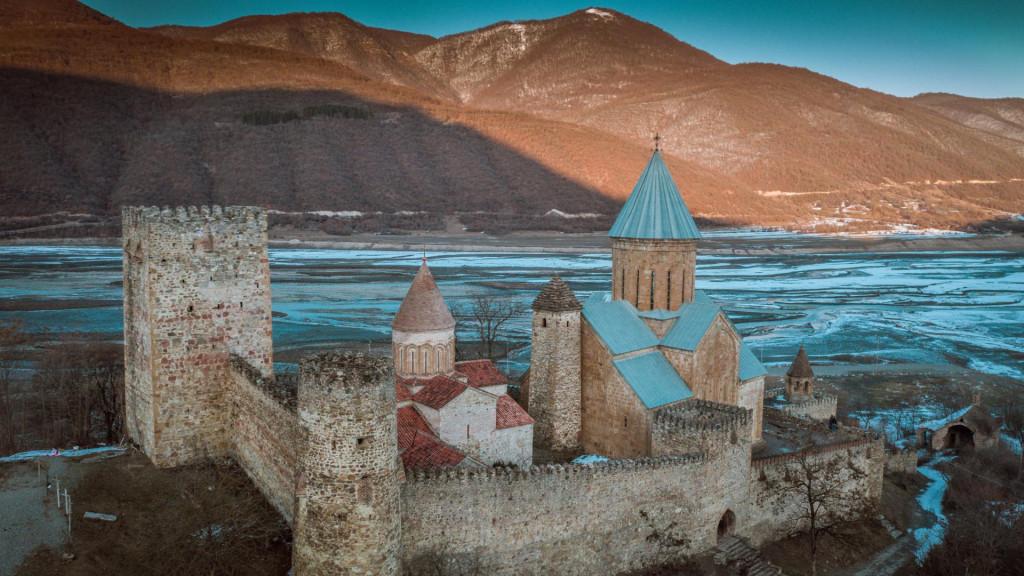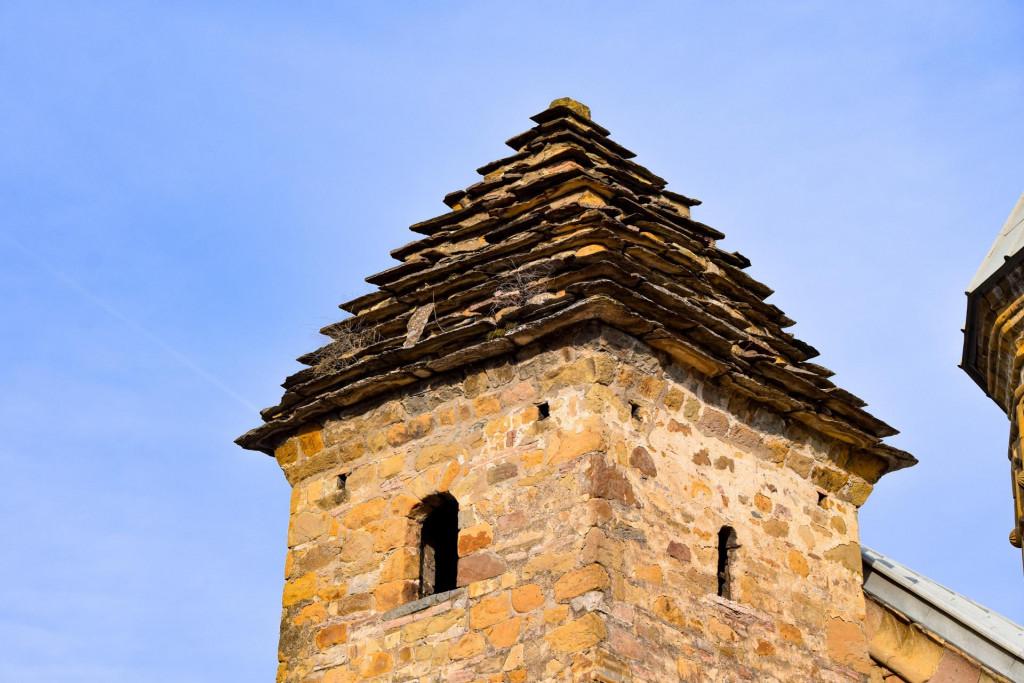
About Ananuri
Ananuri Fortress Complex - a fortress of the feudal era (XVI-XVIII centuries) near the village of Ananuri. It is located in eastern Georgia, in Dusheti municipality of Mtskheta-Mtianeti region, on the historical side of Mtiuleti, on the Georgian military road, at the beginning of Zhinvali reservoir, at 900 meters above sea level.
In the past, this place was the main key point of Aragvi Saeristavo, where it gathered, on the one hand from the north - Tergi-Aragvi valleys and on the other hand, from the middle of Kartli, the main roads coming through Dusheti.
The buildings included in the complex are: upper and lower fortress, fence, towers, Church of the Mother of God, Church of the Deity, “Mkurnali” Church, bell tower, octagonal cell and reservoirs;
History
Ananuri Architectural Ensemble is one of the best monuments of the late feudal era of Georgia. This area (village) has been inhabited since ancient times. However, no traces of early buildings have survived. After the creation of Aragvi Saeristavo, it was included in this Saeristavo. Here was the main fortress of the Aragvi nobility. Its strategic importance increased even more after the weakening of the central government in Georgia (XVII-XVIII centuries). It was the residence of the nobles of Aragvi. The strengthening and restoration of the Ananuri fortress also belongs to this period.
The earliest building of the ensemble is the Khevsurian tower, which is located in the center of the upper fortress. It dates back to the XIV century. Zeda Tsikhe (upper fortress) (citadel) was built in the XVI-XVII centuries, and Kveda Tsikhe (lower fortress) - later, in the XVIII century.
Extensive inscription on the left part of its southern facade provides important information about the main building - the Church of the Mother of God, according to which the church was built in 1689 by the order of Bardzim Mdivanbeg by Qaikhosro Baghsarashvili of Bokaultukhutsesi. The Church of the Deity, located in the western part of the Upper Fortress, was built at the end of the XVI century or in the first half of the XVII century. The inscription of Salkhinobeli tells us that "this dome” (Salkhinobeli) was built in 1674 by the daughter of Ana-Khanum Abashidze, who died prematurely, Edisher Eristimishvili.
In 1743, King Teimuraz II abolished Saeristavo and submitted Ananuri under the rule of the king. From now on it became the residence of the king's officials. In 1786, the area around Ananuri - was conquered by Dagestan Khan, Omar. According to historical records, at that time it was a "small town" with 100 households. In a decree written by Erekle II in 1791, Ananuri Fortress is mentioned among the seven strongest fortresses. The venerable king took refuge in this fortress after being defeated in an unequal battle on the Krtsanisi field.
The location at the crossroads of trade routes led to the development of trade here. There was also a royal custom here. Pottery, cloth production was developed. In the second half of the XVIII century there was a royal painting here. In the first half of the XIX century, Ioane Batonishvili called Ananuri a "butcher town".
In 1803-21 Ananuri was the provincial center. During the Kakheti uprising of 1812, he was burned by Russian troops.
Map

Tours In Mtskheta - Mtianeti
Enjoy the beauty of the Ananuri fortress from a bird's eye view - https://youtu.be/eNtA4xQWXug



































Please login to ask a question
Ask a Question